3 MODULE 1
Earth Changes
WITH SPOTLIGHT LESSONS ON Changes in Mater TEXAS
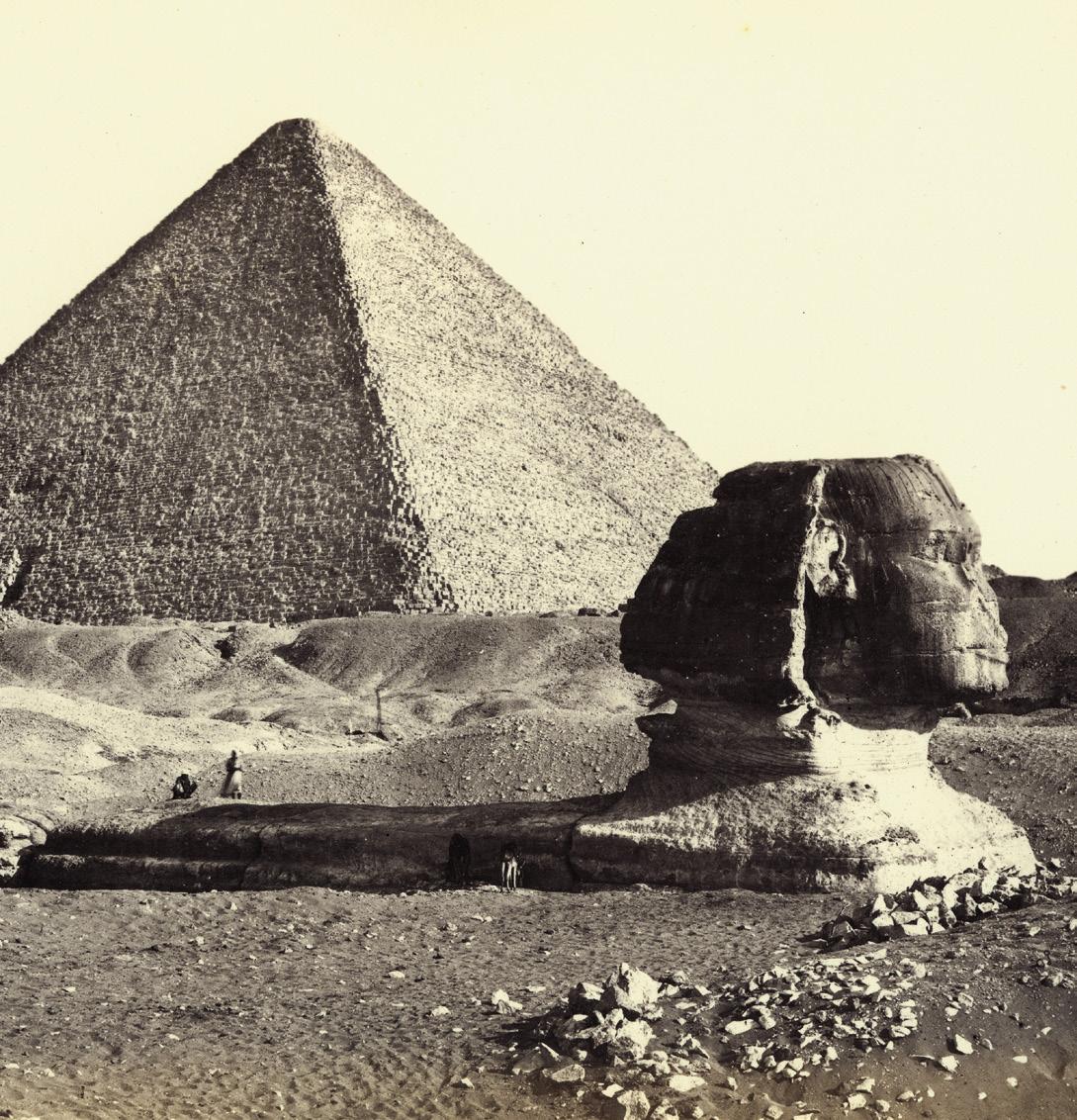
TEXAS
Level 3 Module 1: Earth Changes
WITH SPOTLIGHT LESSONS ON
Changes in Matter
Science Logbook
Student Name:
Great Minds® is the creator of Eureka Math® , Eureka Math2® , Wit & Wisdom®, and PhD Science®
Published by Great Minds PBC greatminds.org
© 2024 Great Minds PBC. Except where otherwise noted, this content is published under a limited public license with the Texas Education Agency. Use limited to noncommercial educational purposes. Where indicated, teachers may copy pages for use by students in their classrooms. For more information, visit https://gm.greatminds.org/texas.
Printed
ISBN 979-8-88588-542-3
Earth Changes
Name: Date: LEVEL 3 MODULE 1
Module Question Log
As your class agrees on the Essential Question and Phenomenon Questions, record them here.
Name:
Date:
LESSON 1 ACTIVITY GUIDE A
Write what you notice and wonder.
I Notice
Name:
Date:
LESSON 1 ACTIVITY GUIDE B Observe
Name:
LESSON 2 ACTIVITY GUIDE A
Listen and Draw
Draw what your teacher describes.
Date:
Name:
LESSON 2 ACTIVITY GUIDE B
Draw Surtsey
Draw a model to show how Surtsey formed.
Date:
Explain your model.
Name:
LESSON 3 ACTIVITY GUIDE A
Observe Land Samples
Common Land Samples
Write the properties you observe.
Sample
Properties
Date:
Local Land Sample
Name:
Date:
LESSON 3 ACTIVITY GUIDE B
Describe How Soil Forms
How does soil form? Use evidence from your observations and information from the readings.
Name:
Date:
LESSON 4 ACTIVITY GUIDE
Investigate Rocks
Observe Rocks
Draw and label each rock. Then draw what you observe after each test.
Construct an Argument
Choose two observations to use as evidence. Explain why each observation supports the claim.
Write the claim.
Observation 1
This observation supports the claim because
Observation 2
This observation supports the claim because
Name:
Date:
LESSON 6 ACTIVITY GUIDE A
Observe and Describe Landforms
1. In each pair of photographs, circle the differences in the landform.
2. Below each photograph, write one observation about the shape of the landform. Then write an observation about the components that make up the landform.
The Wall Arch in Arches National Park, Utah
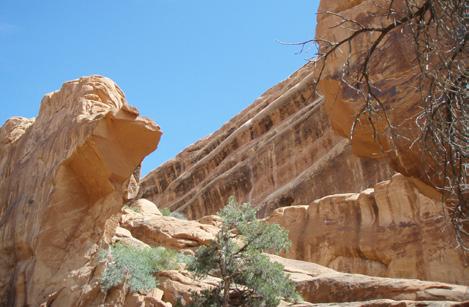
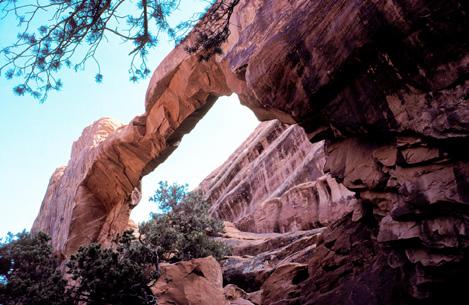
Kīlauea Volcano in Hawai’i Volcanoes National Park, Hawaii

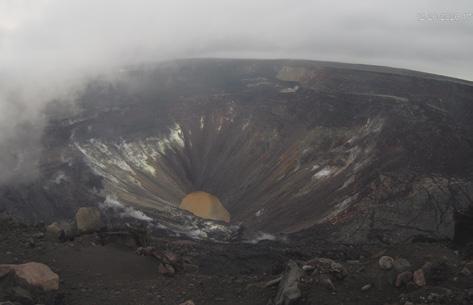
December 20, 2020
December 24, 2020
Cliff in Big Sur, California
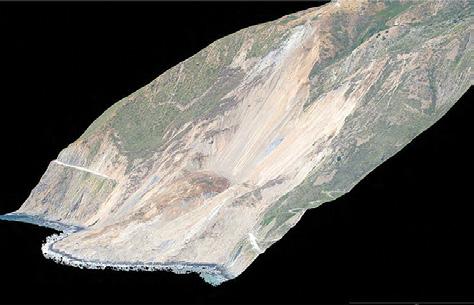
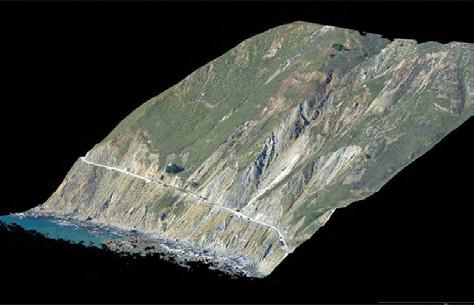
March 8, 2017
May 27, 2017
Name:
Date:
LESSON 6 ACTIVITY GUIDE B
Support a Claim
Circle the claim you agree with.
▪ Claim 1: Landforms can change shape over time.
▪ Claim 2: Landforms cannot change shape over time.
Observe the different landforms. Write three observations to use as evidence. Explain why each observation supports the claim you selected.
Observation 1
This observation supports the claim because
Observation 2
This observation supports the claim because
Observation 3
This observation supports the claim because
Name:
Date:
LESSON 8 ACTIVITY GUIDE A
Wave Demonstration
Draw the land before the waves. Using centimeters, label your drawing with the length of the land.
Draw the land after the waves. Using centimeters, label your drawing with the length of the land.
Name:
Date:
LESSON 8 ACTIVITY GUIDE B
Investigate Land and Water
Model Name:
Draw the land before adding water. Using centimeters, label your drawing with the length of the land.
Draw the land after adding water. Using centimeters, label your drawing with the length of the land.
Name:
Date:
LESSON 9 ACTIVITY GUIDE
Landslide Solution
Draw a model of your solution. Label the materials.
How could your solution help people?
Name:
Date:
LESSON 11 ACTIVITY GUIDE
Investigate Land and Wind
Observe Land and Wind
Circle the name of your model.
Sand Soil Gravel
Observe the land from the side and fr om above the bin. Write what you see.
Description
Look at the shape you dr ew on the bin. Describe changes to the land.
Construct an Argument
Choose two observations to use as evidence. Explain why each observation supports the claim.
Claim: Wind can change land.
Observation 1
This observation supports the claim because
This observation supports the claim because
Name:
Date:
LESSON 12 ACTIVITY GUIDE
Observe Effects of Wind on Land
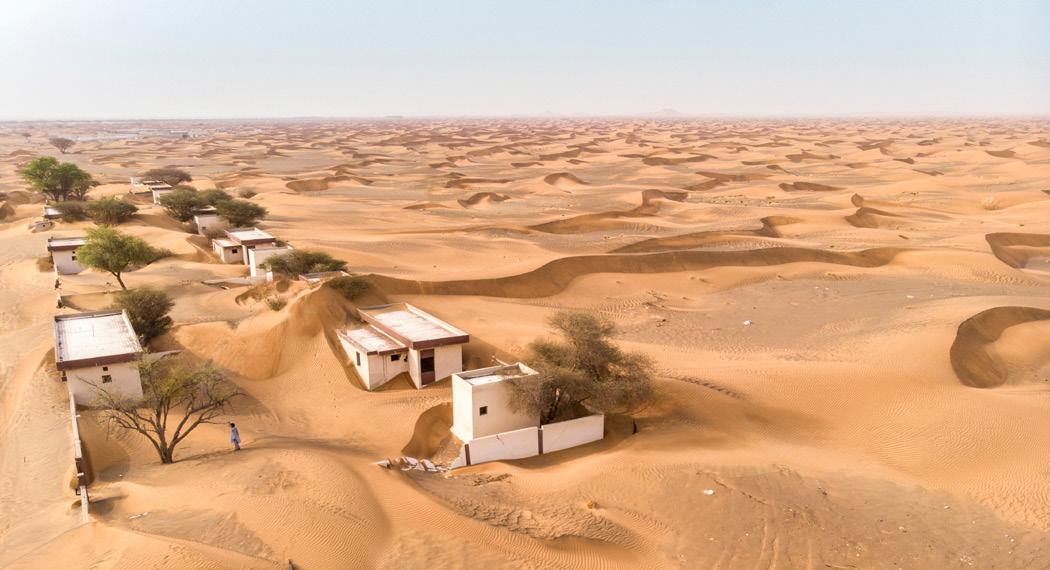
1. Observe the two pictures.
2. Where has the wind changed the land in a way that causes problems for people? Circle those ar eas.
What problems do you think people had when the wind changed the land?

Name:
Date:
LESSON 14 ACTIVITY GUIDE A
Name:
Date:
LESSON 14 ACTIVITY GUIDE B
Engineering Challenge
Ask Define the problem. Identify the criteria and constraints.
Problem:
Imagine
How suitable is each material?
What are the properties of the material?
What could your solution look like?
1. Draw a sketch of your idea.
2. Label the materials and write the amount of each material.
3. Think about the properties of each material. How will these properties help keep water from changing the land as quickly?
How will you build your solution?
1. Draw your group’s design.
2. What are the parts of the system? Label the parts.
3. Label the materials and write the amount of each material.
4. How will the materials keep waves from changing the land as quickly? Write a description.
Create
Does your solution work?
1. Build your shoreline protection system.
2. Test your system. Record the results. The lighthouse fell after waves.
3. How did the waves affect the land around the lighthouse?
Improve
How can you improve your solution?
We can improve our shoreline protection system by
In our improved system, the lighthouse fell after waves.
How did the properties of the materials used in your improved system pr otect the shoreline?
How did the systems compare? Write your ideas.
Share
Collect feedback from your classmates.
With your group, think about the system you created and what you lear ned. Decide the best way to share your findings. Use the checklist to write down notes to help plan your presentation.
We can explain how we used natural resources in our design.
We can explain why we chose our materials.
We can explain how the parts of our design work together to slow changes to the land.
We can explain changes we made to our design.
We can explain why we made our improvements.
We can explain how we conserved natural resources in our design.
We each have a role in the presentation.
Presentation Planning Notes
Write about your solution.
Materials
Future Improvements
Describe your shoreline protection system.
Name: Date:
LESSON 18 ACTIVITY GUIDE A
Ask Questions
During presentations, ask questions about the group’s solution and design process. Choose one from below.
▪ How did you use natural resources in your design? Why did you choose those materials?
▪ How do the parts of your design work together to slow changes to the land?
▪ What changes did you make to your design? Why did you make those changes?
▪ How did your changes affect the success of your design?
▪ How did you conserve natural resources?
Or write and ask your own question.
Name: Date:
LESSON 18 ACTIVITY GUIDE B
Reflect on the Share Stage
Use this checklist to reflect on your knowledge.
I can explain how we used natural resources in our design.
I can explain why we chose our materials.
I can explain how the parts of our design work together to slow changes to the land.
I can explain the changes we made to our design.
I can explain why we made our improvements.
I can explain how we conserved natural resources in our design.
Use this checklist to think about your participation.
I contributed to my group’s presentation.
I listened actively to the other groups’ presentations.
I asked other groups questions about their design.
Teacher Comments
Name:
Date:
LESSON 20 ACTIVITY GUIDE
Compare Time Spans of Events
Event
Seconds Minutes
Earth Event
Life Event
Event
Earth Event
Hours Days Years
Life Event
Name:
Date:
LESSON 23 ACTIVITY GUIDE A
Key Terms About Earth Changes
Cut out the key terms about Earth changes.
Yardang
Map
Create a relationship map in the space. Place the terms on the page. Draw arrows or other symbols to connect them. Write words that show the relationships between the terms. Glue the terms to the paper.
Name:
Date:
LESSON 23 ACTIVITY GUIDE B
Surtsey’s Changing Shape
Essential Question: How can the island of Surtsey change shape over time?
Name:
Date:
LESSON 23 ACTIVITY GUIDE C
Collaborative Conversation Strategies
Choose one or two strategies that you want to use in the Socratic Seminar. Circle them or cut them out.
Make a connection between ideas. That idea reminds me of .
Explain your thinking.
I think that because .
Add to what someone else says.
I agree with , and I also think that . I like that idea because .
Offer an example to support your own or someone else’s idea.
An example of that is .
Give a different viewpoint.
I politely disagree with because .
That’s a good point, but I think .
Ask a question about someone else’s idea. I have a question about .
Are you saying ?
Return to a question or idea.
Let’s go back to what was saying about .
Let’s go back to the question (or idea) that .
Encourage someone to tell more about their ideas.
Explain why an idea is important. That idea is important because .
That is an interesting idea.
Can you tell me more about ?
Summarize the conversation.
I think the big idea is .
Do we agree that ?
Name:
Date:
LESSON 1 ACTIVITY GUIDE A
Name:
Date:
LESSON 1 ACTIVITY GUIDE B
Identify Ways to Conserve Resources
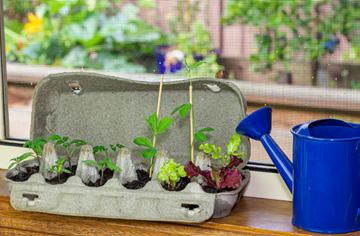

Draw a line from each word to the photograph that matches the word.
Reuse
Recycle
Reduce
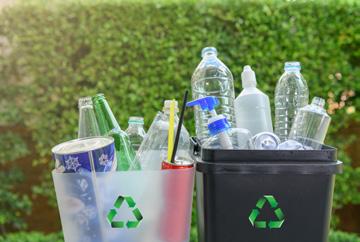
Think about the photographs your group placed in the reduce category. What is similar about those photographs?
What is one difference between reusing and recycling?
Name:
Date:
LESSON 2 ACTIVITY GUIDE A
Jot–Pair–Share
Objects at the recycling center are made of different materials, such as glass, plastic, paper, and cardboard. What are some ways to separate these objects?
What I Think
What My Partner Thinks
What We Will Share
The Best Idea from Others
Name:
Date:
LESSON 2 ACTIVITY GUIDE B
Record Properties of Objects
Work with your group to complete the data table.
Object
Steel spoon
Flat glass bead
Paper cup
Plastic cap
What does it look and feel like?
What is the object’s mass? (g) Is it magnetic?
Does it sink or foat in water?
Answer the Phenomenon Question: What properties can be used to separate objects made of different materials?
Name:
Date:
LESSON 3 ACTIVITY GUIDE A
Observe Properties
When the hot plate is turned on, what will happen to the ice cubes? Write your prediction.
Record the properties of the sample.
Sample:
Properties Properties
Reflection
What causes a solid to turn into liquid? Explain by using evidence from the investigation.
Name:
LESSON 3 ACTIVITY GUIDE B
Concept Map About Matter
Cut out these terms about matter.
Date:
Map
Create a concept map in the space below. Arrange the terms on the page. Draw arrows or other symbols to connect terms. Write words to show the relationship between the terms. When your map is fnal, glue the terms to the paper.
Name:
Date:
LESSON 4 ACTIVITY GUIDE
Reflect on Balancing Balloons Video
Vote–Discuss–Revote
What will happen to the balloons on the balance? Circle your frst vote.
A. Nothing will happen.
B. The orange balloon will move down.
C. The blue balloon will move down.
Explain your reasoning.
If your vote has changed, circle your new vote.
A. Nothing will happen.
B. The orange balloon will move down.
C. The blue balloon will move down. Explain your reasoning.
Reflection
Did removing air from the blue balloon change its mass? Why do you think that?
Do you think air is matter? Why do you think that?
How is blowing up a balloon similar to what the glassblower does with liquid glass?
Name:
Date:
LESSON 5 ACTIVITY GUIDE
Observe Heating and Cooling
Heating and Cooling
Record your observations.
Sample: Properties Before Heating Properties While Heating Properties After Cooling
Volume of Water Before Heating
Volume of Water After Cooling
What will happen while the water is heating? Write your prediction.
Reflection
What happens to the state of liquid water when it is heated? Use evidence to explain.
What happens to the state of liquid glass when it is cooled? Use evidence to explain.
Name:
LESSON 6 ACTIVITY GUIDE
Conserve Resources
Draw one way to conserve a natural resource.
Date:
Reflection
Why is it important to conserve natural resources?
Name:
Date:
LESSON 7 ACTIVITY GUIDE B
Engineering Challenge
Ask: Defne the problem. Identify the criteria and constraints.
Problem:
Imagine: Research. Brainstorm solutions. Select a solution.
Record your data in the table.
Tool Which objects were separated?
Balloon pump
Mesh screen
What property was used to separate the objects?
Magnet
Container of water
Record the tools you want to use in your separation process.
Plan: Identify materials. Generate a detailed design.
List the steps your machine will perform to separate the crayons.
What tools will you need to create your process?
Create and Improve: Test and evaluate. Redesign.
It took seconds to separate the crayons by hand. In the table, record the data from trial 1 and trial 2.
Trial
How long did it take to separate objects with tools?
Were the crayons separated from other objects?
Were the crayons separated last? 1 2
What works well?
What needs improvement?
What will you change? How do you think those changes will make your process better?
Imagine:
Crayons Before Heating Crayons After Heating
Predict: What will happen to the crayons after they cool?
Share: Receive feedback.
Use the checklist and the space below to plan your presentation.
We can explain the tools we used to separate crayons and why we chose them.
We can explain the parts of the machine and how they work together as a system.
We can explain changes we made to our design and why we made those improvements.
We can explain why the crayon recycling process is important for conserving natural resources.
We each have a role for the presentation.
Presentation Notes
Final Diagram: Use the space below to plan or take notes for your final diagram.
How is your machine a system with parts that work together?
What is the function of the machine? Circle and explain. Reduce Reuse Recycle
Name:
Date:
LESSON 10 ACTIVITY GUIDE A
Ask Questions
During presentations, ask questions about the group’s solution and design process. Choose one of the questions below or ask one of your own.
▪ What tools did you use to separate crayons? Why did you choose those tools?
▪ How do the parts of your machine work together as a system?
▪ What changes did you make to your design? Why did you make those changes?
▪ Why is recycling crayons important for conserving natural resources? Or write your own question:
Name:
Date:
LESSON 10 ACTIVITY GUIDE B
Reflect on the Share Stage
Use this checklist to reflect on your knowledge.
I can explain the tools we used to separate crayons and why we chose them.
I can explain the parts of the machine and how they work together as a system.
I can explain changes we made to our design and why we made those improvements.
I can explain why the crayon recycling process is important for conserving natural r esources.
Use this checklist to reflect on your participation.
I contributed to my group’s presentation.
I listened actively to the other group’s presentation.
I asked the other group questions about their design.
Teacher Comments
Credits
Great Minds® has made every effort to obtain permission for the reprinting of all copyrighted material. If any owner of copyrighted material is not acknowledged herein, please contact Great Minds for proper acknowledgment in all future editions and reprints of this logbook.
Earth Changes
Page 20 (left), Natural History Archive/Alamy Stock Photo, (right), U.S. National Park Service; pages 21 (left), 22 (left and right), U.S. Geological Survey; page 21 (right), Mathias Berlin/Shutterstock.com; page 35, Katiekk/Shutterstock.com; page 36, Prime Stock/Shutterstock.com
Changes in Matter
Page 605 (from top), Mikbiz/shutterstock.com, S.SUPHON/Shutterstock.com, HollyHarry/Shutterstock.com; All other images are the property of Great Minds.
Acknowledgments
Great Minds® Staff
The following writers, editors, reviewers, and support staff contributed to the development of this curriculum:
Amanda Abbood, Nashrah Ahmed, Maria Albina, Ana Alvarez, Lindsay Arensbak, Lynne Askin-Roush, Marissa Axtell, Brian Aycock, Keith Bannister, Nina Barcelli, Trevor Barnes, John Barnett, Greg Bartus, Michele Baskin, Koi Beard, Tocarra Bell, Brianna Bemel, Kerry Benson, Sanobar Bhaidani, David Blair, Ranell Blue, Jennifer Bolton, Sandy Brooks, Bridget Brown, Taylor Brown, Dan Brubaker, Carolyn Buck, Sharon Buckby, Lisa Buckley, Kristan Buckman, Becky Bundy, Sarah Bushnell, Eric Canan, Adam Cardais, Crystal Cizmar, Emily Cizmas, Rolanda Clark, Elizabeth Clarkin-Breslin, Christina Cooper, Kim Cotter, Karen Covington, Gary Crespo, Madeline Cronk, Lisa Crowe, Allison Davidson, Kristin Davis, Brandon Dawson, Megan Dean, Katherine DeLong, Julie Dent, Jill Diniz, Erin Doble, Delsena Draper, Amy Dupre, Jami Duty, Jessica Dyer, Lily Eisermann, Alison Engel, Sandy Engelman, Tamara Estrada, Lindsay Farinella, De Edra Farley, Ubaldo Feliciano-Hernández, Molly Fife, Lisa Fiorilli, Soudea Forbes, Mark Foster, Richard Fox, Peter Fraser, Reba Frederics, Liz Gabbard, Diana Ghazzawi, Lisa Giddens-White, Patricia Gilbert, Ellen Goldstein, Laurie Gonsoulin, Pamela Goodner, Kristen Gray, Lorraine Griffith, Dennis Hamel, Heather Harkins, Cassie Hart, Kristen Hayes, Sarah Henchey, Marcela Hernández, Abbi Hoerst, Jessica Holman, Missy Holzer, Matthew Hoover, Robert Hunter, Jennifer Hurd, Rachel Hylton, Robert Ingram Jr., Mamie Jennings, Reagan Johnson, Yuria Joo, Marsha Kaplan, Frankie Katz, Ashley Kelley, Robert Kelly, Lisa King, Suzanne Klein, Betsy Kolodziej, Sarah Kopec, Jenny Kostka, Drew Krepp, Rachel Lachiusa, Brittany Langlitz, Mike Latzke, Lori Leclair, Catherine Lee, Jennifer Leonberger, Jessica Levine, Caren Limbrick, Latoya Lindsay, Sarah Lomanno, Katherine Longo, Scott Loper, Susan Lyons, Kristi Madden, David Malone, Carolyn Mammen, Katrina Mangold, Stacie McClintock, Miranda McDaniel, Megan McKinley-Hicks, Cindy Medici, Ivonne Mercado, Sandra Mercado, Kevin Mesiar, Patty Messersmith, Brian Methe, Patricia Mickelberry, Marisa Miller, Sara Montgomery, Melissa Morgan, Mackenzie Most, Lynne Munson, Mary-Lise Nazaire, Corinne Newbegin, Darin Newton, Bekka Nolan, Tara O’Hare, Gillia Olson, Max Oosterbaan, Tamara Otto, Catherine Paladino, Meagan Palamara, Christine Palmtag, Mallory Park, Marya Parr, Joshua Paschdag, Emily Paulson, Emily Peterson, Margaret Petty, Nina Phelps, Jeffrey Plank, Judy Plazyk, Amelia Poppe, Lizette Porras, Jeanine Porzio, Jennifer Raspiller, Dan Ray, Brianna Reilly, Jocelyn Rice, Leandra Rizzo, Sally Robichaux, Cortni Robinson, Jeff Robinson, Todd Rogers, Karen Rollhauser, Allyson Romero, Angel Rosado Vega, Carol Rose, Angela Rothermel, Kim Rudolph, Megan Russo, Isabel Saraiva, Vicki Saxton, Michelle Schaut, Lauren Scheck, Gina Schenck, Stephanie Schoembs, Amy Schoon, Jesse Semeyn, Rudolph Shaffer, Khushali Shah, Nawshin Sharif,
Lawrence Shea, Aaron Shields, Cindy Shimmel, Maria Shingleton, Melissa Shofner, Erika Silva, Kerwyn Simpson, Laura Sirak-Schaeffer, Amy Snyder, Victoria Soileau, Rachel Stack, Isaac Stauffer, Leigh Sterten, Marianne Strayton, Mary Sudul, Lisa Sweeney, Elizabeth Szablya, Annie Wentz Tete, Heidi Theisen, Brian Thompson, Lauren Trahan, Olga Tuman, Kimberly Tyler, Jennifer VanDragt, Tracy Vigliotti, Freddy Wang, Lara Webb, Dave White, Charmaine Whitman, Erica Wilkins, Tiffany Williams, Erin Wilson, Mark Wise, Glenda Wisenburn-Burke, Armetta Wright, Howard Yaffe, Nazanene Yaqubie, Christina Young, Amy Zaffuto, Cat Zarate, and Suzanne Zimbler.
Colleagues and Contributors
We are grateful for the many educators, writers, and subject-matter experts who made this program possible.
Tricia Boese, Thomas Brasdefer, Andrew Chen, Arthur Eisenkraft, Pat Flanagan, Rachel Gritzer, Fran Hess, Kim Marcus, Fred Myers, Jim O’Malley, Neela Roy, Ed Six, and Larry Stowe
One day, a volcano erupted in the ocean. The next day, a tiny island had appeared. The island of Surtsey was born. Dig in real dirt to learn about what land is and how it can change. How does water affect land? What about wind? Use what you learn to stop a lighthouse from falling into the ocean.
In the Spotlight: What happens to objects in a recycling bin? Test if a spoon is magnetic. Investigate how glass changes when heated and cooled. Design a process to recycle crayons. Use properties of matter to explain how used objects are turned into new objects. Along the way, ask yourself, How does my new knowledge help me understand the world?
LEVEL 3 MODULES
1 EARTH CHANGES with Spotlight Lessons on Changes in Mater
2 SURVIVAL AND CHANGE
3 FORCES AND MOTION with Spotlight Lessons on the Solar System
ON THE COVER
The Sphinx and Great Pyramid, Giza, Egypt, 1857

Photo by Francis Frith, Library of Congress
Photo credit: Adoc-photos/Art Resource, New York, NY, USA
ISBN 979-8-88588-542-3
Great Minds® brings teachers and scholars together to craft exemplary instructional materials that inspire joy in teaching and learning. PhD Science®, Eureka Math®, Eureka Math2 ®, and our English curriculum Wit & Wisdom® all give teachers what they need to take students beyond rote learning to provide a deeper, more complete understanding of the sciences, mathematics, and the humanities.
